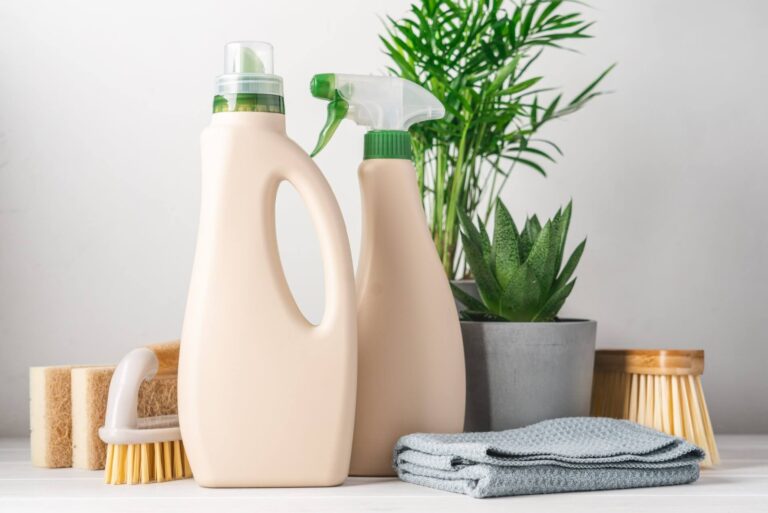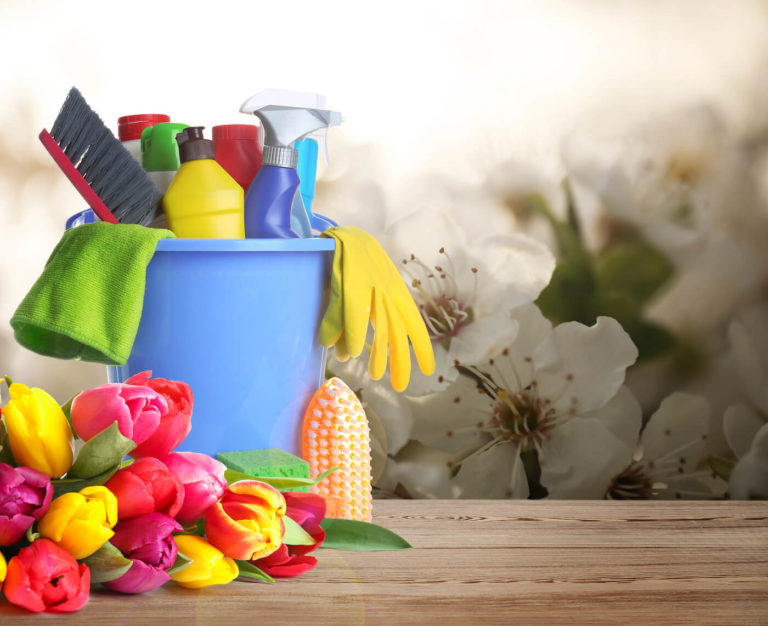
Indoor air quality is an important health concern. The air inside homes and offices can often be more polluted than outdoor air, exposing people to various toxins and pollutants. Poor indoor air quality has been linked to headaches, fatigue, respiratory issues, and even long-term health problems like heart disease and cancer.
Fortunately, adding indoor plants can be a simple and effective way to help clean indoor air and create a healthier living or working environment. Here’s how indoor plants can dramatically improve air quality and cleanliness:
How Plants Purify Indoor Air
Plants act as natural air purifiers through various biochemical processes:
- Photosynthesis – Through photosynthesis, plants absorb carbon dioxide from the air and release oxygen. This helps reduce CO2 levels and increase oxygen levels indoors.
- Transpiration – The process by which plants release water vapor through their leaves and into the air. This increases humidity and helps clean the air.
- Air Filtration – Plant leaves and soil naturally filter the air as it circulates past them, trapping dust, pollen, and other particles.
- Pollutant Uptake – Plants absorb and break down pollutants like formaldehyde, benzene, and trichloroethylene through their root systems. The pollutants are metabolized and converted to nutrients for the plant.
- Microbe Protection – The soil microbes around plant roots help decompose pollutants absorbed by the plant. This further improves the air.
Top Indoor Air Pollutants Removed by Plants
Some of the most common indoor air pollutants that plants can help remove include:
Volatile Organic Compounds (VOCs)
VOCs like formaldehyde, benzene, and trichloroethylene are released from many indoor sources like furniture, cleaning products, and office equipment. Prolonged VOC exposure can irritate eyes and airways and cause headaches, dizziness, and worse.
But many indoor plants are effective at absorbing and metabolizing VOCs before they accumulate in the air. Some top VOC-removing plants include areca palm, lady palm, bamboo palm, rubber plant, dracaena, peace lily, golden pothos, and snake plant.
Carbon Monoxide (CO)
CO is an odorless, toxic gas that can leak into homes and offices from gas stoves, furnaces, and vehicle exhaust. In poorly ventilated indoor spaces, CO can build up to dangerous levels and cause flu-like symptoms or even death in high concentrations.
Having leafy green plants indoors provides a natural way to filter out excess CO. Some great options for filtering carbon monoxide from indoor air are areca palm, neem, ivy, spider plant, golden pothos, and dracaena.
Ammonia (NH3)
Ammonia is a pungent gas commonly found in household cleaners. It can cause coughing, skin irritation, and burning sensations if inhaled in large amounts.
Plants like spider plants, aloe vera, English ivy, and dracaena can help absorb ammonia and prevent it from accumulating indoors.
Xylene
Xylene is a solvent used in printing, rubber, and leather industries. It’s also found in some paints, polish removers, and gasoline. Xylene exposure can lead to headaches, dizziness, and vomiting.
Indoor plants that can filter xylene from the air include areca palm, peace lily, ficus, and Boston fern. Place these plants near potential xylene sources like garages or home workshops to help keep the air clean.
Formaldehyde
Formaldehyde is released from manufactured wood products, paper products, and various household items. It’s a known human carcinogen and can cause watery eyes, burning sensations, coughing, and skin irritation when inhaled.
Many common houseplants are excellent formaldehyde absorbers, including spider plants, peace lilies, philodendrons, bamboo palm, and chrysanthemums. Concentrate these plants in offices or newly constructed homes where formaldehyde levels tend to be higher.
Ideal Number of Plants For Air Purification
The number of plants needed to effectively clean the air will depend on the size of your indoor space. A good rule of thumb is to incorporate at least one plant per 100 square feet of floor space.
For a 500 square foot office or living room, 5-10 plants should make a noticeable difference in air quality. Focus on placing plants in rooms where you spend the most time or notice more dust and odors. Bedrooms and office spaces are ideal locations.
Also consider the height of your ceiling and add more plants for taller rooms. Air can circulate more, allowing pollutants to accumulate before being cleaned by plants. More foliage is needed to filter larger volumes of indoor air.
Best Air Purifying Plant Species
All plants naturally purify air to some degree, but some species are more effective than others. The most efficient air cleaning plants include:
Peace Lily
Peace lilies are excellent all-around air cleaners. They remove VOCs like formaldehyde, xylene, and ammonia as well as toluene and trichloroethylene. Their large leaves and high transpiration rate also boost humidity and filtrate airborne particles.
Snake Plant (Mother-in-Law’s Tongue)
Snake plants, one of the most popular houseplants, are champions at filtering formaldehyde, xylene, toluene, and nitrogen oxides from indoor air. They are also exceptionally hardy and easy to care for.
Spider Plant
Spider plants have fast growing leaves that absorb VOCs, xylene, and carbon monoxide. Their impressive transpiration rates also help control mold and purify air.
Areca Palm
Areca palms are extremely effective for removing VOCs including benzene, trichloroethylene, and formaldehyde from indoor environments. Their large, feathery fronds filter gases and provide lush visual appeal.
Boston Fern
Boston ferns remove formaldehyde, xylene, and toluene through their actively growing fronds. Their fuzzy texture also traps additional dust and air particulates.
Bamboo Palm
Also called a reed palm, the bamboo palm filters benzene, trichloroethylene, and formaldehyde from indoor air. It also handles drier air well making it suitable for office environments.
Dracaena
Dracaena species are excellent for removing trichloroethylene, benzene, formaldehyde, and xylene from indoor spaces. Varieties like the dragon tree and corn plant have thick, knotty stems and slender leaves for maximum air contact.
Rubber Plant
The rubber plant removes formaldehyde and carbon monoxide from indoor air. Its large, glossy leaves give it an eye-catching appearance.
Positioning Tips for Greatest Impact
Where you place air purifying plants can affect how efficiently they filter the air. Here are some tips on plant positioning:
- Place plants near known pollutant sources like bathrooms, kitchens, cleaning supplies, printers, or garage doors. This maximizes their exposure to the pollutants that need removed.
- Use tall shelves, plant stands, or hanging baskets to elevate plants. With more air circulating underneath, more pollutants can be captured overall.
- Group plants together to increase foliage density in one area. This creates a more concentrated air cleaning zone.
- Add plants to entryways or hallways that connect to polluted rooms. Airborne chemicals will be filtered out before circulating to other areas.
- Keep plants away from air conditioning or heating vents to prevent disrupting natural air flow.
- Rotate plant locations periodically so all spaces benefit from the air purification effects.
Proper Plant Care For Optimal Air Cleaning
To keep plants in optimum health for purifying indoor air, follow these care tips:
- Water plants as soon as the top inch of soil becomes dry. Don’t let them get overly parched or saturated.
- Apply plant-safe fertilizers monthly during the growing season for lush, vibrant growth.
- Prune plants regularly to promote dense foliage and remove dead leaves and stems.
- Dust broad leaf plants periodically to preserve their air filtering capacity.
- Turn plants frequently so all sides get equal light exposure. Rotate toward the sun throughout the day.
- Replace potting soil annually to replenish nutrients. Repot root bound plants in the next size container.
- Group plants with compatible light and watering needs to simplify care.
- Keep plants away from drafty areas, excessive heat sources, or cold windows to avoid shock.
The Clean Air Benefits of Indoor Plants
Poor indoor air quality is an unseen threat in many modern homes and workspaces. The toxins and chemicals that lurk in stale indoor air can accumulate to hazardous levels without proper ventilation or filtration. Just a few strategically placed indoor plants can provide natural and effective air purification around the clock., p
As well as cleaning the air of harmful pollutants, indoor plants add visual appeal, improve moods, reduce stress, and bring nature’s life indoors. With the right plant selections and proper positioning, it’s simple to leverage the air filtering power of plants for cleaner, healthier indoor spaces.
Install more plants in your living and working spaces and let their natural air purification properties enhance your indoor environment. Breathe easier knowing the air is fresher in rooms where vibrant green plants thrive.
Everclean Cleaning Services
At Everclean, we provide professional cleaning services to help keep your indoor spaces fresh and healthy. Our deep cleaning, carpet cleaning, and upholstery cleaning services can eliminate dust, allergens, and pollutants from your home. Contact us today to learn more about our air quality enhancing cleaning services!
Sources:
[1] https://www.epa.gov/indoor-air-quality-iaq/improving-indoor-air-quality
[2] https://www.sciencedirect.com/science/article/pii/S1352231013005086


